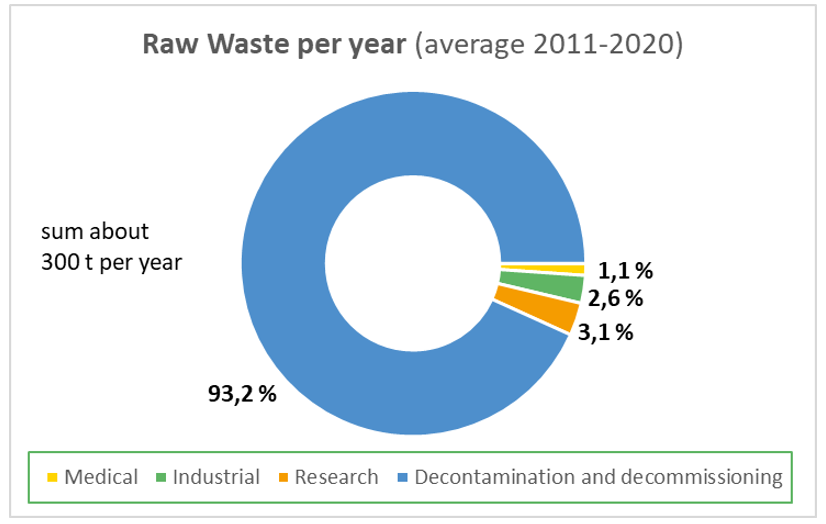Radioactive Waste in Austria Radioactive waste consists of radioactive materials with no intended future use cases, they are subject to regulatory control.
Radioactive waste not only results from the many useful applications of radioactive materials in medicine, industry and research, but also from the decontamination (cleaning of materials or surfaces to remove radioactive substances) and the dismantling of old facilities and installations (decommissioning).
Radioactive waste from medicine, industry and research accounts for less than 10 % of the radioactive waste produced in Austria. More than 90 % of the radioactive waste originates from decontamination or decommissioning. Austria’s radioactive waste is collected at the interim storage facility in Seibersdorf (Nuclear Engineering Seibersdorf – NES).
In Austria a total of about 300 tonnes of raw waste need to be processed, conditioned and temporarily stored at NES each year.
Most of the decommissioning waste originates from the facility in Seibersdorf itself. Starting around 1950 extensive nuclear research was carried out at this site over several decades. Since these activities have ceased the facilities and installations need to be dismantled and the radioactive waste must be processed. The resulting radioactive waste mostly consists of contaminated parts, lab equipment and furniture as well as demolition rubble. Apart from the site in Seibersdorf radioactive waste may result from decommissioning or the remediation of legacy sites.
Radioactive materials from decommissioning projects are sorted and decontaminated through complex processing techniques so that a majority of the material can be cleared from regulatory control. This means that the activity is small enough to not pose any danger and the material may be disposed of in a regular landfill or incinerated. In this manner it has been possible to reduce the waste from decommissioning projects by 80 % on average.
The leftover radioactive waste is collected at NES and conditioned. During conditioning the aim is to reduce the waste volume as much as possible. This may be achieved in different ways, a more detailed description of the process can be found here. On average this comprehensive treatment method results in around 200 drums of conditioned radioactive waste each year. They are stored in the interim storage facility in Seibersdorf.
Austria’s only research reactor is operated by the “Atominstitut” at the Vienna University of Technology. Due to legal obligations and in line with the take-back agreement the fuel assembly of the research reactor will be returned to its supplier (the US department of Energy) at the end of its lifespan.
